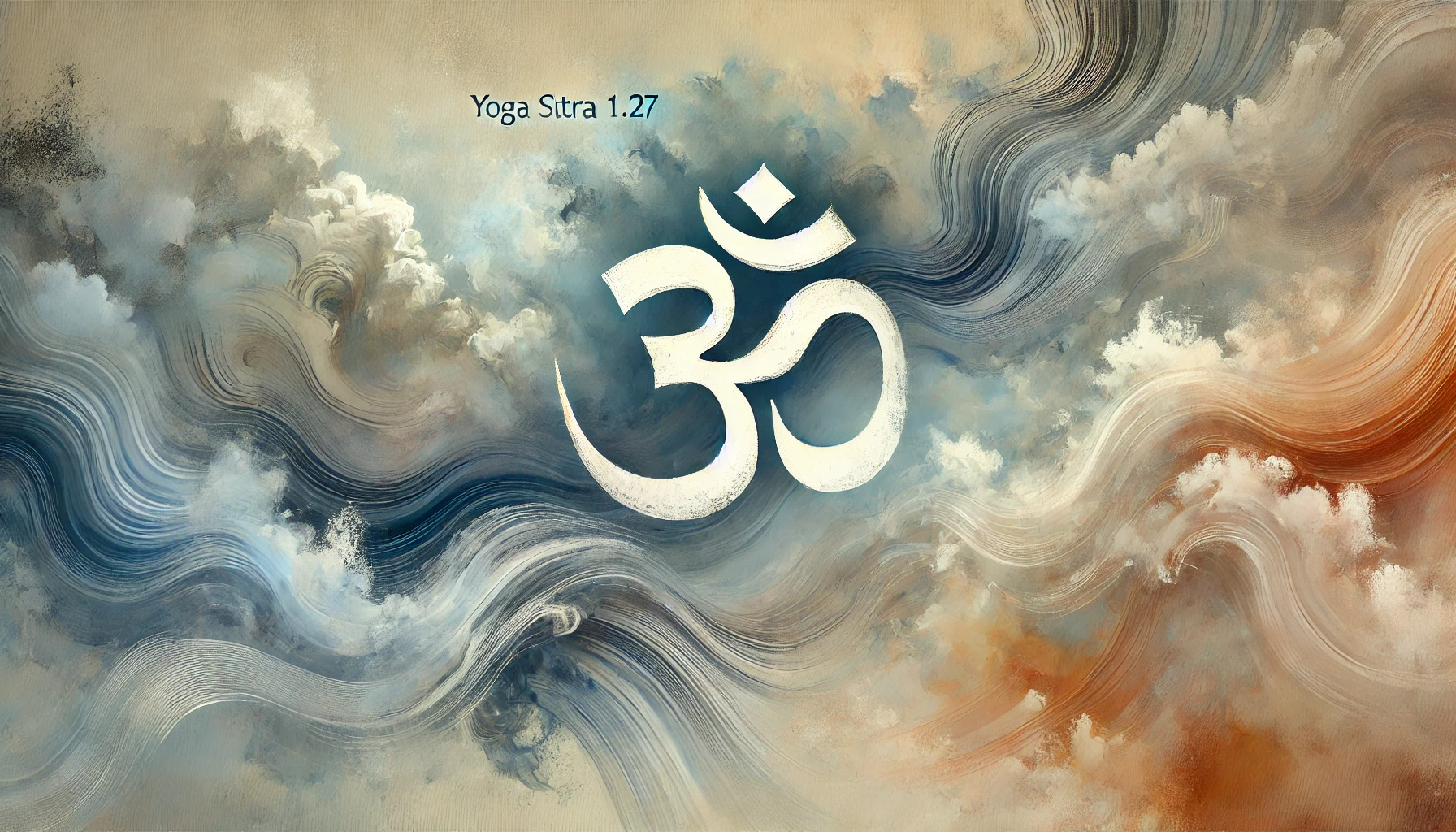
Yoga Sutra 1.27: Tasya Vachakah Pranavah
Introduction
Yoga Sutra 1.27 introduces the sacred sound of Om (Pranava) as the expression of Ishvara (Supreme Consciousness). This verse, “Tasya Vachakah Pranavah,” explains that the divine presence is represented by the vibration of Om, which is the primordial sound of the universe. Understanding this sutra helps practitioners connect with the cosmic vibration of Om as a tool for spiritual growth and meditation.
The Meaning of Yoga Sutra 1.27
The Sanskrit phrase “Tasya Vachakah Pranavah” can be broken down as follows:
- Tasya (तस्य) – “His, of Ishvara”
- Vachakah (वाचकः) – “Word, expression, or symbol”
- Pranavah (प्रणवः) – “Om, the primordial sound”
A widely accepted translation is: “The expression (symbol) of Ishvara is Om.”
This sutra highlights that Om is not just a sound but a profound vibrational force that embodies the essence of divine consciousness.
The Significance of Om (Pranava)
Patanjali teaches that Om is the universal sound that represents the eternal presence of Ishvara. Chanting Om aligns the practitioner with divine energy, inner peace, and spiritual awakening.
Example 1: The Cosmic Vibration
Science has shown that the universe is made of energy and vibration. Om is believed to be the original vibration from which all existence emerged.
Example 2: The Sound That Connects All Traditions
Many spiritual traditions use sacred sounds similar to Om, such as “Amin” in Islam or “Amen” in Christianity, showing its universal connection to divine consciousness.
Example 3: Om as a Meditative Tool
Chanting Om creates a vibrational resonance in the body and mind, helping practitioners enter deeper meditative states and silence mental fluctuations.
Why This Sutra Matters
Yoga Sutra 1.27 is significant because it provides a practical tool (Om) to connect with Ishvara. By meditating on Om, practitioners attune to the cosmic vibration and cultivate inner stillness.
Key Takeaways:
- Om is the sacred sound that represents Ishvara’s presence.
- Chanting Om harmonizes the mind and connects with divine energy.
- The vibration of Om leads to deeper meditation and self-awareness.
How to Apply Sutra 1.27 in Daily Life
To integrate the power of Om into spiritual practice, practitioners can adopt the following habits:
1. Chant Om as a Meditation Practice
- Begin your meditation with slow, mindful Om chanting.
- Feel the vibration in your body and let it center your mind.
- Use Om to enter a deep state of stillness and presence.
2. Use Om in Daily Activities
- Chant Om before starting yoga or spiritual studies.
- Whisper Om to yourself during moments of stress to regain focus.
- Recognize Om as a reminder of divine consciousness in all aspects of life.
3. Reflect on the Meaning of Om
- Contemplate Om as the vibration of creation, preservation, and dissolution.
- Observe how all sounds and energies arise from and return to silence—just like Om.
- Use Om as a symbol of your connection with the universe and your inner self.
By integrating these principles, we develop a deeper awareness of the divine presence within and around us.
Conclusion
Yoga Sutra 1.27 explains that Om (Pranava) is the expression of Ishvara, representing the eternal cosmic vibration. By chanting Om and meditating on its resonance, practitioners connect with divine energy, inner peace, and spiritual awakening.
Embracing “Tasya Vachakah Pranavah” as a guiding principle allows us to experience the profound power of sound, vibration, and consciousness in our spiritual journey.
